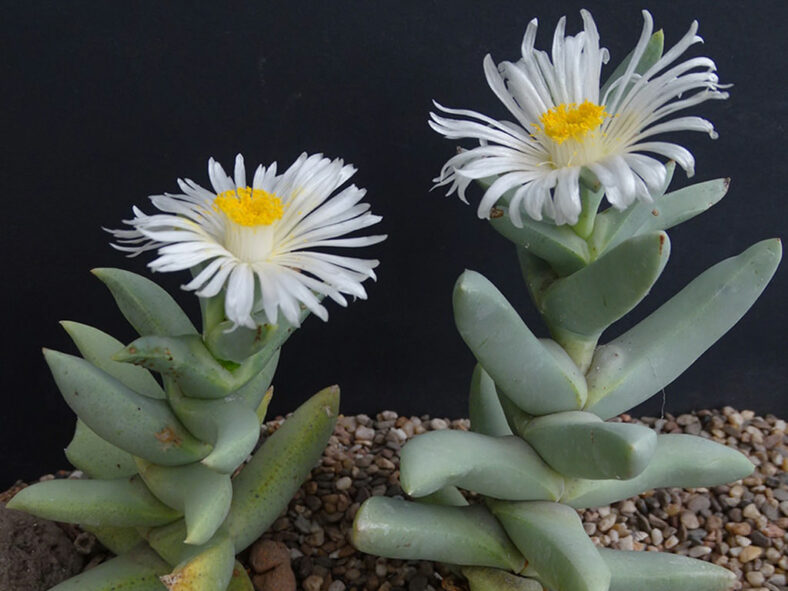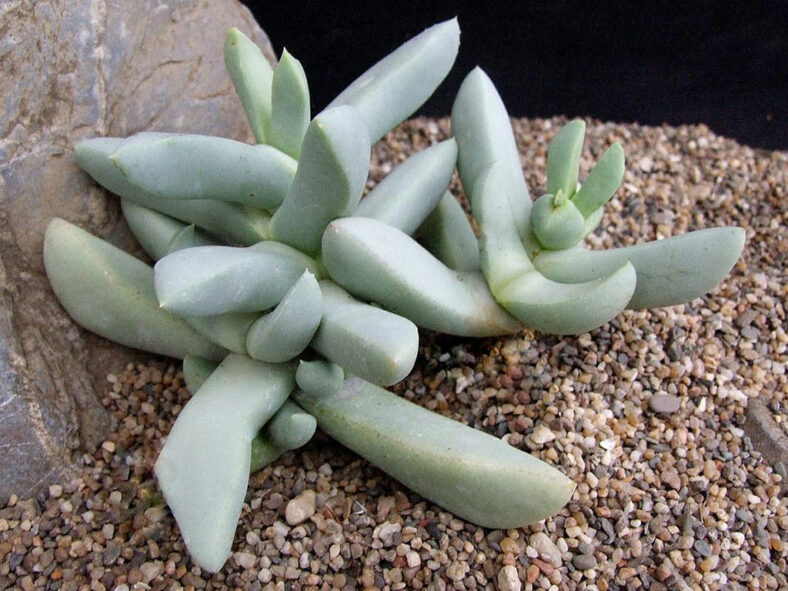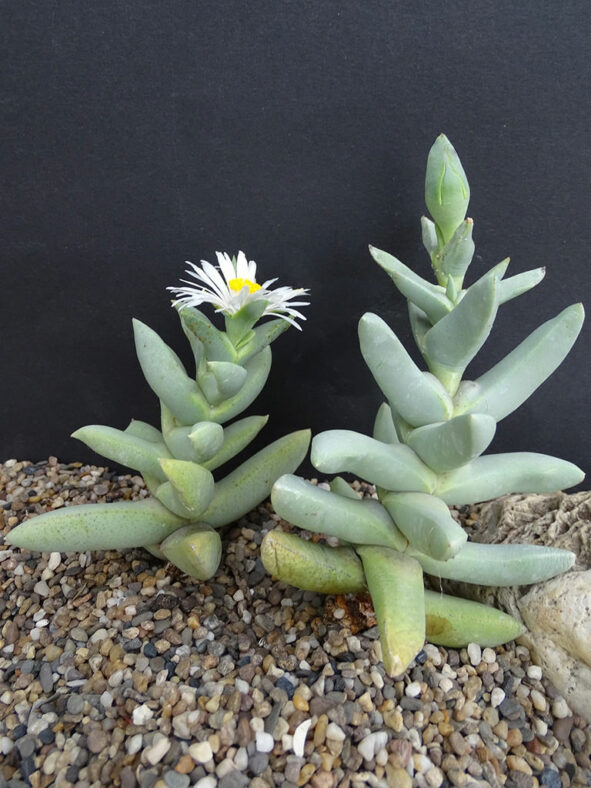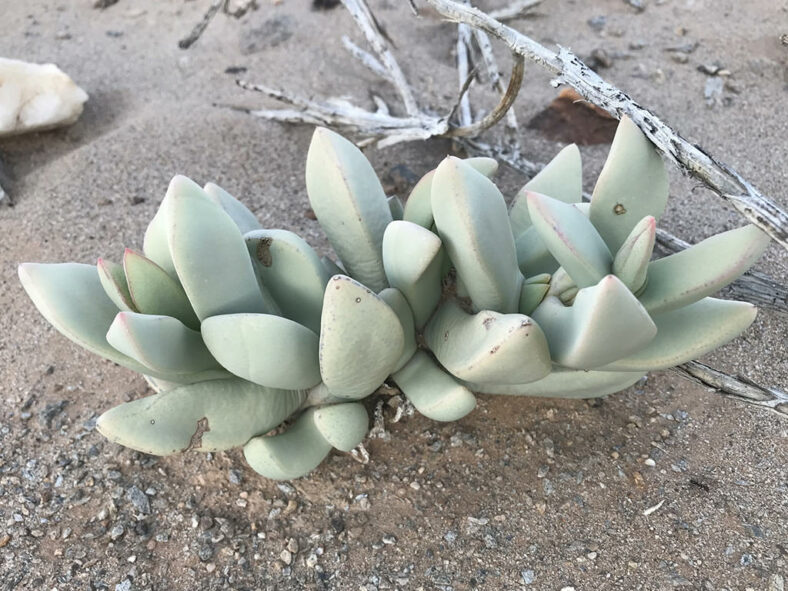Juttadinteria albata is similar to Juttadinteria attenuata but has larger leaves and a more upright habit.
Scientific Name
Juttadinteria albata (L.Bolus) L.Bolus
Synonym(s)
Mesembryanthemum albatum
Scientific Classification
Family: Aizoaceae
Subfamily: Ruschioideae
Tribe: Ruschieae
Genus: Juttadinteria
Etymology
The specific epithet "albata" (pronounced al-BAY-tuh) means "clothed in white" and possibly refers to the whitish leaves.
Origin
Antimima dualis is native to Namibia and South Africa. It grows in sandy, often calcareous soils, rocky slopes, or on plains on both the South African and Namibian sides of the Orange River.
Description
Juttadinteria albata is a succulent shrublet with procumbent to erect branches and smooth, whitish leaves that taper to a narrow apex.
In winter, Juttadinteria albata produces flowers with numerous narrow, white petals. The flowers can reach a diameter of 2.2 inches (5.5 cm). The fruits are 8-locular capsules.

How to Grow and Care for Juttadinteria albata
Light: Juttadinteria albata requires bright light but not too much direct sunlight. So, a windowsill that receives 4 to 5 hours of direct sunlight in the morning and partial shade in the afternoon will be a perfect spot for indoor growing.
Soil: The plant thrives in porous soil, allowing the water to drain away quickly. Therefore, use commercial soil for succulents or make your own well-draining mix.
Temperature: High temperatures are not a problem as long as there is plenty of fresh air, but this plant is not cold-hardy. It grows best in USDA Plant Hardiness Zones 9a to 11b, with average minimum winter temperatures ranging from 20 to 50 °F (-6.7 to 10 °C).
Watering: To keep your Juttadinteria albata healthy, it is most important to know when, how much, and how often to water it. During the dormant period, usually in winter, the plant requires little or no water. From spring to fall, water it thoroughly but allow the soil to dry between waterings.
Fertilizing: As long as you repot this plant every two years, it does not need fertilizer.
Repotting: Even if it can stay happy in the same pot for years, once in a while, you can repot your plant to give it more space anytime during the growing season. However, the best time is at the beginning of the growing season.
Propagation: One way to propagate this plant is by dividing clumps, which is quite simple. Another option is to start from seeds by sowing them in well-draining soil during spring. The best time for dividing is late spring or early summer.
Learn more at How to Grow and Care for Mesembs.
Toxicity of Juttadinteria albata
Juttadinteria albata is considered non-toxic and safe around kids and pets.
Links
- Back to genus Juttadinteria
- Succupedia: Browse succulents by Scientific Name, Common Name, Genus, Family, USDA Hardiness Zone, Origin, or cacti by Genus
Photo Gallery
Click on a photo to see a larger version.


